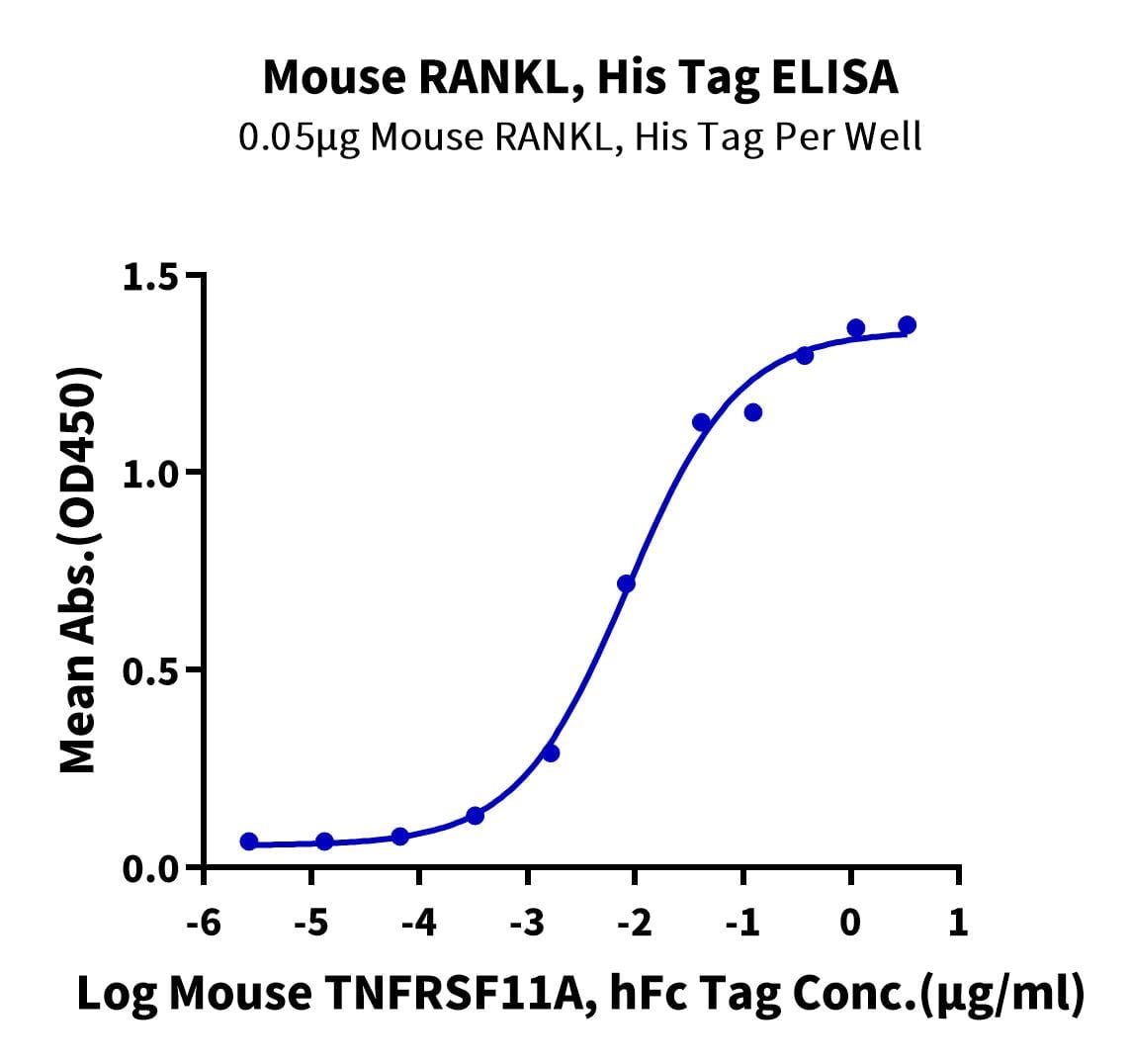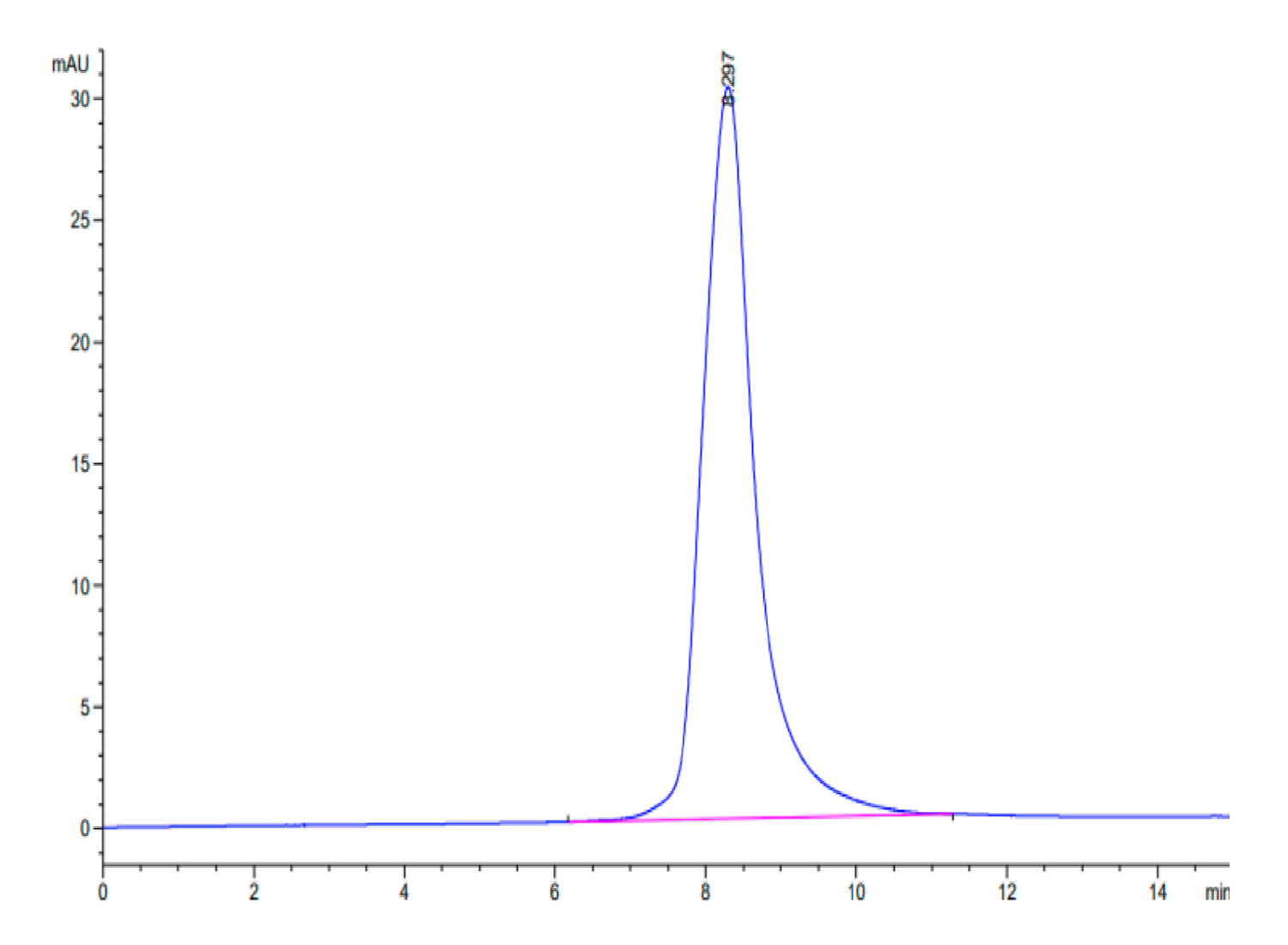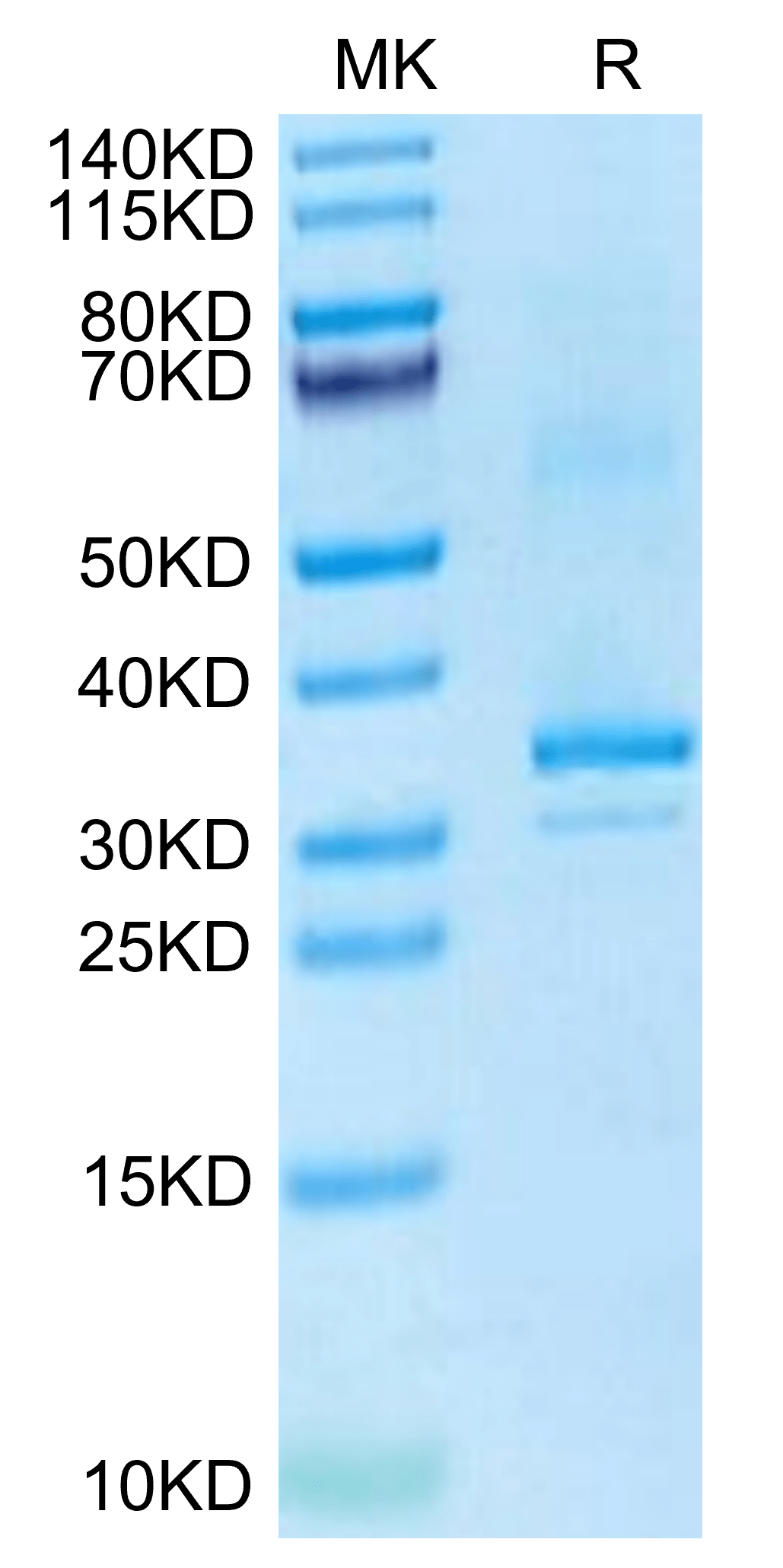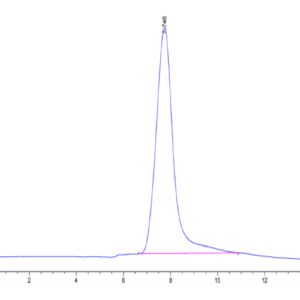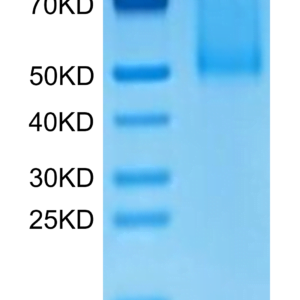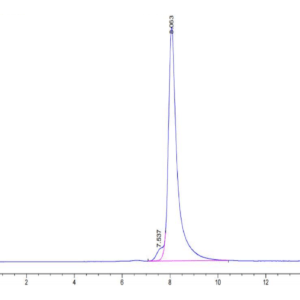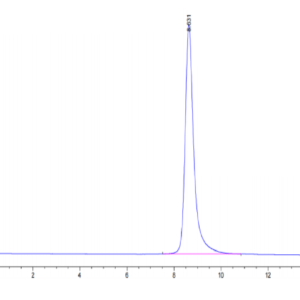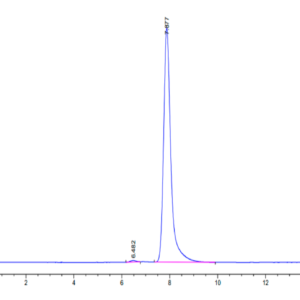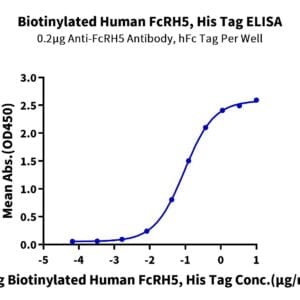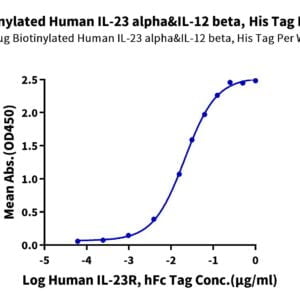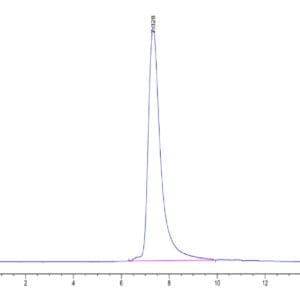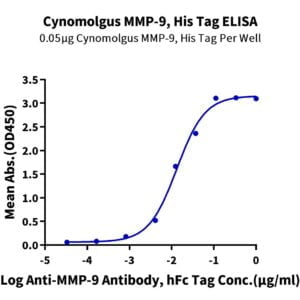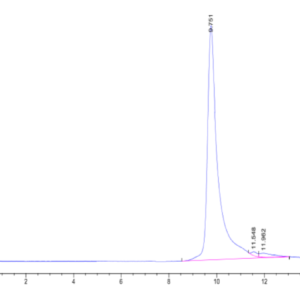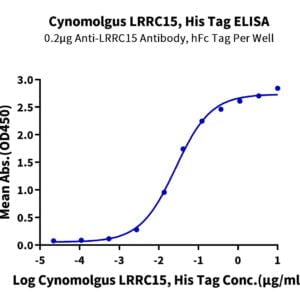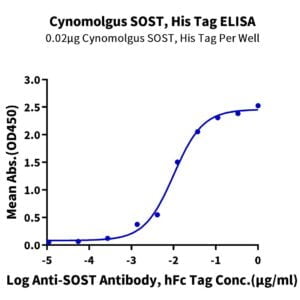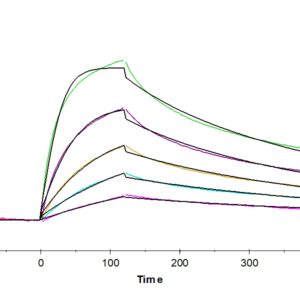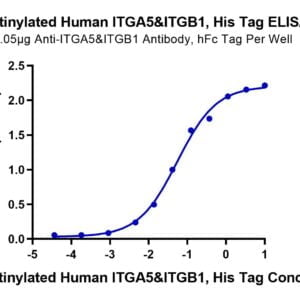| Weight | 1 lbs |
|---|---|
| Dimensions | 9 × 5 × 2 in |
| accession | AAC40113 |
| express system | HEK293 |
| product tag | C-His |
| purity | > 95% as determined by Tris-Bis PAGE;> 95% as determined by HPLC |
| background | Receptor activator of nuclear factor x03BA;B (RANK) and its ligand (RANKL) have originally been described for their key roles in bone metabolism and the immune system. Subsequently, it has been shown that the RANKL-RANK system is critical in the formation of mammary epithelia in lactating females and the thermoregulation of the central nervous system. RANKL and RANK are under the tight control of the female sex hormones estradiol and progesterone. |
| molecular weight | The protein has a predicted MW of 28.97 kDa. Due to glycosylation, the protein migrates to 30-40 kDa based on Tris-Bis PAGE result. |
| available size | 100 µg, 500 µg |
| endotoxin | Less than 1EU per μg by the LAL method. |
Mouse RANKL/TNFSF11/CD254 Protein 3167
$315.00 – $1,050.00
Summary
- Expression: HEK293
- Functional: Yes (ELISA)
- Amino Acid Range: Tyr70-Asp316
Mouse RANKL/TNFSF11/CD254 Protein 3167
| protein |
|---|
| Size and concentration 100, 500µg and lyophilized |
| Form Lyophilized |
| Storage Instructions Valid for 12 months from date of receipt when stored at -80°C. Recommend to aliquot the protein into smaller quantities for optimal storage. Please minimize freeze-thaw cycles. |
| Storage buffer Shipped at ambient temperature. |
| Purity > 95% as determined by Tris-Bis PAGE |
| target relevance |
|---|
| Receptor activator of nuclear factor x03BA;B (RANK) and its ligand (RANKL) have originally been described for their key roles in bone metabolism and the immune system. Subsequently, it has been shown that the RANKL-RANK system is critical in the formation of mammary epithelia in lactating females and the thermoregulation of the central nervous system. RANKL and RANK are under the tight control of the female sex hormones estradiol and progesterone. |
| Protein names Tumor necrosis factor ligand superfamily member 11 (Osteoclast differentiation factor) (ODF) (Osteoprotegerin ligand) (OPGL) (Receptor activator of nuclear factor kappa-B ligand) (RANKL) (TNF-related activation-induced cytokine) (TRANCE) (CD antigen CD254) [Cleaved into: Tumor necrosis factor ligand superfamily member 11, membrane form; T |
| Gene names TNFSF11,TNFSF11 OPGL RANKL TRANCE |
| Protein family Tumor necrosis factor family |
| Mass 9606Da |
| Function Cytokine that binds to TNFRSF11B/OPG and to TNFRSF11A/RANK. Osteoclast differentiation and activation factor. Augments the ability of dendritic cells to stimulate naive T-cell proliferation. May be an important regulator of interactions between T-cells and dendritic cells and may play a role in the regulation of the T-cell-dependent immune response. May also play an important role in enhanced bone-resorption in humoral hypercalcemia of malignancy (PubMed:22664871). Induces osteoclastogenesis by activating multiple signaling pathways in osteoclast precursor cells, chief among which is induction of long lasting oscillations in the intracellular concentration of Ca (2+) resulting in the activation of NFATC1, which translocates to the nucleus and induces osteoclast-specific gene transcription to allow differentiation of osteoclasts. During osteoclast differentiation, in a TMEM64 and ATP2A2-dependent manner induces activation of CREB1 and mitochondrial ROS generation necessary for proper osteoclast generation (By similarity). |
| Catalytic activity #N/A |
| Subellular location [Isoform 1]: Cell membrane; Single-pass type II membrane protein.; [Isoform 3]: Cell membrane; Single-pass type II membrane protein.; [Isoform 2]: Cytoplasm .; [Tumor necrosis factor ligand superfamily member 11, soluble form]: Secreted . |
| Tissues Highest in the peripheral lymph nodes, weak in spleen, peripheral blood Leukocytes, bone marrow, heart, placenta, skeletal muscle, stomach and thyroid. |
| Structure Homotrimer (By similarity). Interacts with TNFRSF11B (PubMed:22664871). Interacts with TNFRSF11A. Interacts with FBN1 (via N-terminal domain) in a Ca(+2)-dependent manner (By similarity). Interacts with TNFAIP6 (via both Link and CUB domains). |
| Post-translational modification The soluble form of isoform 1 derives from the membrane form by proteolytic processing (By similarity). The cleavage may be catalyzed by ADAM17. |
| Target Relevance information above includes information from UniProt accession: O14788 |
| The UniProt Consortium |
Data
Publications
Publications
| pmid | title | authors | citation |
|---|---|---|---|
| We haven't added any publications to our database yet. | |||
Protocols
| relevant to this product |
|---|
Documents
| # | ||
|---|---|---|
| Please enter your product and batch number here to retrieve product datasheet, SDS, and QC information. | ||
